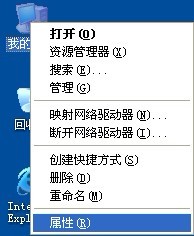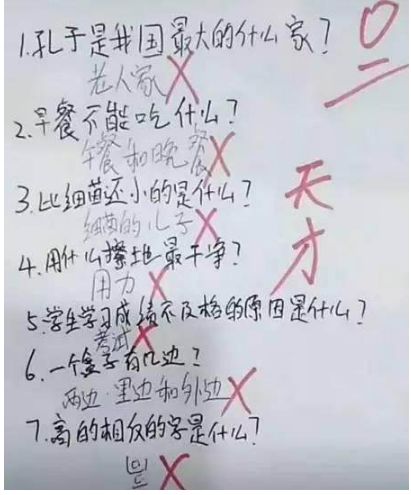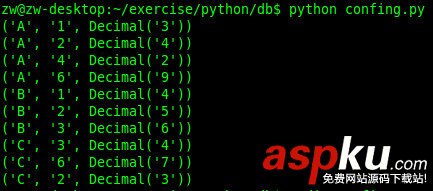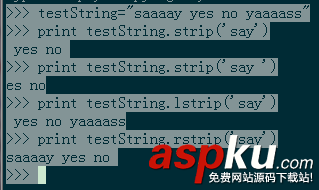在Python所有的數(shù)據(jù)結(jié)構(gòu)中,list具有重要地位,并且非常的方便,這篇文章主要是講解list列表的高級應(yīng)用,基礎(chǔ)知識可以查看博客。
此文章為python英文文檔的翻譯版本,你也可以查看英文版:https://docs.python.org/2/tutorial/datastructures.html
use a list as a stack: #像棧一樣使用列表
stack = [3, 4, 5] stack.append(6) stack.append(7) stack [3, 4, 5, 6, 7] stack.pop() #刪除最后一個對象 7 stack [3, 4, 5, 6] stack.pop() 6 stack.pop() 5 stack [3, 4]
use a list as a queue: #像隊列一樣使用列表
> from collections import deque #這里需要使用模塊deque > queue = deque(["Eric", "John", "Michael"])> queue.append("Terry") # Terry arrives> queue.append("Graham") # Graham arrives> queue.popleft() # The first to arrive now leaves'Eric'> queue.popleft() # The second to arrive now leaves'John'> queue # Remaining queue in order of arrivaldeque(['Michael', 'Terry', 'Graham']) three built-in functions: 三個重要的內(nèi)建函數(shù)
filter(), map(), and reduce().
1)、filter(function, sequence)::
按照function函數(shù)的規(guī)則在列表sequence中篩選數(shù)據(jù)
> def f(x): return x % 3 == 0 or x % 5 == 0... #f函數(shù)為定義整數(shù)對象x,x性質(zhì)為是3或5的倍數(shù)> filter(f, range(2, 25)) #篩選[3, 5, 6, 9, 10, 12, 15, 18, 20, 21, 24]
2)、map(function, sequence):
map函數(shù)實現(xiàn)按照function函數(shù)的規(guī)則對列表sequence做同樣的處理,
這里sequence不局限于列表,元組同樣也可。
> def cube(x): return x*x*x #這里是立方計算 還可以使用 x**3的方法...> map(cube, range(1, 11)) #對列表的每個對象進行立方計算[1, 8, 27, 64, 125, 216, 343, 512, 729, 1000]
注意:這里的參數(shù)列表不是固定不變的,主要看自定義函數(shù)的參數(shù)個數(shù),map函數(shù)可以變形為:def func(x,y) map(func,sequence1,sequence2) 舉例:
seq = range(8) #定義一個列表> def add(x, y): return x+y #自定義函數(shù),有兩個形參...> map(add, seq, seq) #使用map函數(shù),后兩個參數(shù)為函數(shù)add對應(yīng)的操作數(shù),如果列表長度不一致會出現(xiàn)錯誤[0, 2, 4, 6, 8, 10, 12, 14]
3)、reduce(function, sequence):
reduce函數(shù)功能是將sequence中數(shù)據(jù),按照function函數(shù)操作,如 將列表第一個數(shù)與第二個數(shù)進行function操作,得到的結(jié)果和列表中下一個數(shù)據(jù)進行function操作,一直循環(huán)下去…
舉例:
def add(x,y): return x+y...reduce(add, range(1, 11))55
List comprehensions:
這里將介紹列表的幾個應(yīng)用:
squares = [x**2 for x in range(10)]
#生成一個列表,列表是由列表range(10)生成的列表經(jīng)過平方計算后的結(jié)果。
[(x, y) for x in [1,2,3] for y in [3,1,4] if x != y]
#[(1, 3), (1, 4), (2, 3), (2, 1), (2, 4), (3, 1), (3, 4)] 這里是生成了一個列表,列表的每一項為元組,每個元組是由x和y組成,x是由列表[1,2,3]提供,y來源于[3,1,4],并且滿足法則x!=y。
Nested List Comprehensions:
這里比較難翻譯,就舉例說明一下吧:
matrix = [ #此處定義一個矩陣... [1, 2, 3, 4],... [5, 6, 7, 8],... [9, 10, 11, 12],... ][[row[i] for row in matrix] for i in range(4)]#[[1, 5, 9], [2, 6, 10], [3, 7, 11], [4, 8, 12]]
這里兩層嵌套比較麻煩,簡單講解一下:對矩陣matrix,for row in matrix來取出矩陣的每一行,row[i]為取出每行列表中的第i個(下標),生成一個列表,然后i又是來源于for i in range(4) 這樣就生成了一個列表的列表。
The del statement:
刪除列表指定數(shù)據(jù),舉例:
> a = [-1, 1, 66.25, 333, 333, 1234.5]>del a[0] #刪除下標為0的元素>a[1, 66.25, 333, 333, 1234.5]>del a[2:4] #從列表中刪除下標為2,3的元素>a[1, 66.25, 1234.5]>del a[:] #全部刪除 效果同 del a>a[]
Sets: 集合
> basket = ['apple', 'orange', 'apple', 'pear', 'orange', 'banana']>>> fruit = set(basket) # create a set without duplicates>>> fruitset(['orange', 'pear', 'apple', 'banana'])>>> 'orange' in fruit # fast membership testingTrue>>> 'crabgrass' in fruitFalse>>> # Demonstrate set operations on unique letters from two words...>>> a = set('abracadabra')>>> b = set('alacazam')>>> a # unique letters in aset(['a', 'r', 'b', 'c', 'd'])>>> a - b # letters in a but not in bset(['r', 'd', 'b'])>>> a | b # letters in either a or bset(['a', 'c', 'r', 'd', 'b', 'm', 'z', 'l'])>>> a & b # letters in both a and bset(['a', 'c'])>>> a ^ b # letters in a or b but not bothset(['r', 'd', 'b', 'm', 'z', 'l'])
Dictionaries:字典
>>> tel = {'jack': 4098, 'sape': 4139}>>> tel['guido'] = 4127 #相當于向字典中添加數(shù)據(jù)>>> tel{'sape': 4139, 'guido': 4127, 'jack': 4098}>>> tel['jack'] #取數(shù)據(jù)4098>>> del tel['sape'] #刪除數(shù)據(jù)>>> tel['irv'] = 4127 #修改數(shù)據(jù)>>> tel{'guido': 4127, 'irv': 4127, 'jack': 4098}>>> tel.keys() #取字典的所有key值['guido', 'irv', 'jack']>>> 'guido' in tel #判斷元素的key是否在字典中True>>> tel.get('irv') #取數(shù)據(jù)4127 也可以使用規(guī)則生成字典:
>>> {x: x**2 for x in (2, 4, 6)}{2: 4, 4: 16, 6: 36} enumerate():遍歷元素及下標
enumerate 函數(shù)用于遍歷序列中的元素以及它們的下標:
>>> for i, v in enumerate(['tic', 'tac', 'toe']):... print i, v...0 tic1 tac2 toe
zip():
zip()是Python的一個內(nèi)建函數(shù),它接受一系列可迭代的對象作為參數(shù),將對象中對應(yīng)的元素打包成一個個tuple(元組),然后返回由這些tuples組成的list(列表)。若傳入?yún)?shù)的長度不等,則返回list的長度和參數(shù)中長度最短的對象相同。利用*號操作符,可以將list unzip(解壓)。
>>> questions = ['name', 'quest', 'favorite color']>>> answers = ['lancelot', 'the holy grail', 'blue']>>> for q, a in zip(questions, answers):... print 'What is your {0}? It is {1}.'.format(q, a)...What is your name? It is lancelot.What is your quest? It is the holy grail.What is your favorite color? It is blue. 有關(guān)zip舉一個簡單點兒的例子:
>>> a = [1,2,3]>>> b = [4,5,6]>>> c = [4,5,6,7,8]>>> zipped = zip(a,b)[(1, 4), (2, 5), (3, 6)]>>> zip(a,c)[(1, 4), (2, 5), (3, 6)]>>> zip(*zipped)[(1, 2, 3), (4, 5, 6)]
reversed():反轉(zhuǎn)
>>> for i in reversed(xrange(1,10,2)):... print i...
sorted(): 排序
> basket = ['apple', 'orange', 'apple', 'pear', 'orange', 'banana']> for f in sorted(set(basket)): #這里使用了set函數(shù)... print f...applebananaorangepear
python的set和其他語言類似, 是一個 基本功能包括關(guān)系測試和消除重復元素.
To change a sequence you are iterating over while inside the loop (for example to duplicate certain items), it is recommended that you first make a copy. Looping over a sequence does not implicitly make a copy. The slice notation makes this especially convenient:
>>> words = ['cat', 'window', 'defenestrate']>>> for w in words[:]: # Loop over a slice copy of the entire list.... if len(w) > 6:... words.insert(0, w)...>>> words['defenestrate', 'cat', 'window', 'defenestrate']
以上就是本文的全部內(nèi)容,希望對大家的學習有所幫助。



















